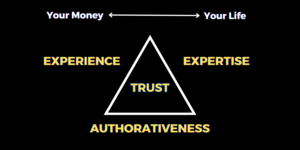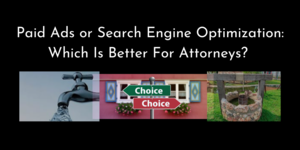Facebook Group Q&A
I saw this question on a Facebook Group this week and it developed into a great conversation among some of the members.

Specifically, the individual voices a real problem for businesses buying leads. Whether we are talking about Real Estate professionals or Mortgage Brokers/Loan Originators or Attorneys, buying leads has a few drawbacks that often lead to results that underperform expectations.
The problems include:
- Quality of leads varies widely which manifests as motivation for potential prospects.
- Buying leads who are unmotivated to action is a waste of both time and money.
- Instead of acquisition cost decreasing as we learn and adapt, the costs of bought leads usually perpetually rise.
- Gains from effectiveness benefit the lead seller much greater than the buyer.
I argue that it is better for businesses to develop and manage their own lead generation processes than buy them from others. If there are problems with lead quality, those within the business best know their target customers to fix them. As the processes are adapted and improved, costs to acquire often fall improving profitability for the business.
The other more systemic problem with lead buying practices is how it often places higher importance on lead acquisition than the processes for nurturing leads into prospects (and ultimately customers). Many buy leads expecting conversions ignoring the fact that a large portion of our market might not be ready to buy right now.
According to Chet Holmes from The Ultimate Sales Machine:
- 3% of any market are buying now
- 7% are open to buying
- 30% are not thinking about it
- 30% do not think they are interested
- 30% know they are not interested
If we discount 90% of a market that is not interested, there is still only about 1 out of 3 who are “buying now”. The other 2 out of 3 might be “open to buying”, but they require contact and nurturing to elevate them.
Recommendation
Instead of buying leads, I suggest that businesses develop their processes for generating their own leads and nurturing them into prospects (and customers). These programs become more strategic and can be targeted specifically to their ideal customers.
The programs need to have three (3) components:
- Attention – This is where awareness is generated within an interested audience. Usually, these are the “leads” that businesses are buying.
- Nurturing – This is where businesses can qualify the leads, gauge their motivation, and begin earning their trust. Depending upon individual characteristics, the “lead” could fall into different groups (from buying now to barely thinking about it). Work done here readies them for elevation into the next phase.
- Conversion – This is where the lead or prospect becomes a customer. After obtaining their attention and nurturing a relationship with them, we can guide them toward the action that makes them a client.
Typical lead buying strategies often skip step #2 attempting conversion of leads unprepared to buy. In some cases, they were bad leads from the start; in others, there was not enough work and effort invested to ready them for the sale.
Lacking a solid marketing strategy that takes each of these steps into account, it is often difficult to identify needed improvements and where they need to be made.
If you or our company need help to lay the foundation for a strategic process like this, we’re here for you. Don’t hesitate to reach out!
I’d love to hear your thoughts so add a comment below.
Here are a few other things that I have caught my eye this week! I included a quick synopsis, but I would love to hear your thoughts on them as well!
7 Key Elements for Your Landing Pages
Landing Pages are a key element of funnel-building. Whether you are attracting traffic from your website, your YouTube channel, your Pay-Per-Click advertising campaigns, or other attention/outreach efforts, your Landing Page is where you direct that traffic for capture and begin your nurturing process. There are many references and tools, but this YouTube video will get you started.
If you need some specific help, shoot me an email so we can chat.
What is Google My Business & How Can It Help My Business?
I shared a link last week on Google My Business Setup. The link above explains why you would want to set your up and what it can deliver for you and your business. It is a key part of identifying you within your local service area and serves as a hub for growing your businesses trust if you engage in an active referral/reputation management strategy.
Google Sheets Add-Ons
Since many of you in the audience are Google tools users (as well as G-Suite customers), tools and add-ons for Google products are always something to check out. Take a look at this list and see which ones you can utilize.
Microsoft releases Clarity (it’s web analytics tool)
I heard about Clarity via another article (Microsoft Launches Its Google Analytics Killer Tool). Yes, that title sounds like “click-bait” and probably is! However, I plan to look into Clarity to check it out. I seriously doubt that it will “kill” Google Analytics, but as it appears to offer some similar & some unique insights into our traffic (and what they do on our sites), it could be another valuable tool to improve our websites and content. More to come!
If there are posts, articles, etc. that you found valuable, shoot me a reply and suggest it.


